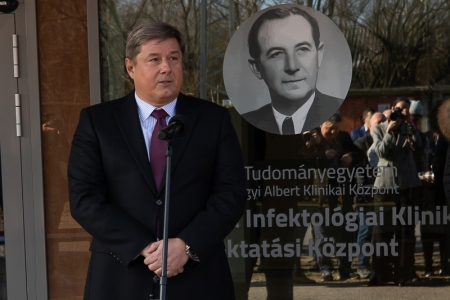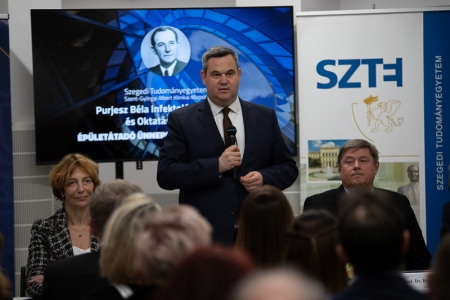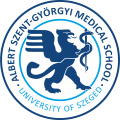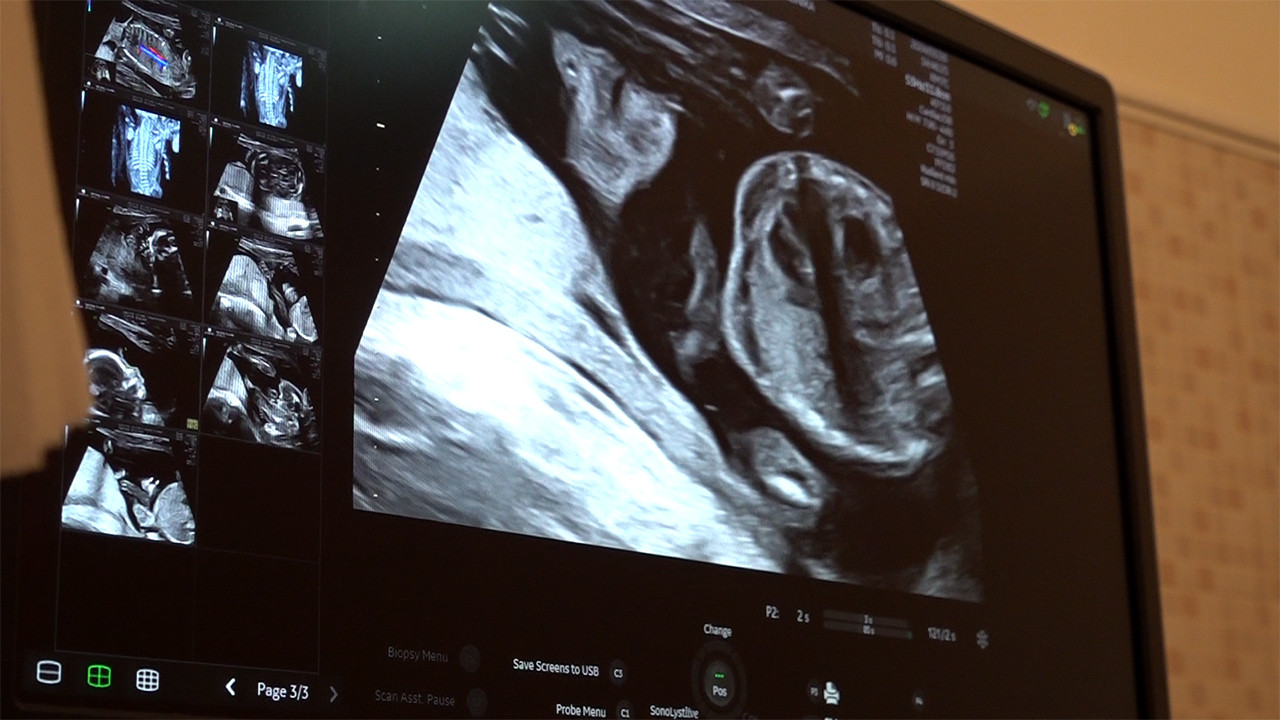University of Szeged
Albert Szent-Györgyi Medical School
Foreign Students' Secretariat
Your Education. Our Mission.

Inauguration of Béla Purjesz Clinical and Educational Centre of Infectious Diseases
The Béla Purjesz Clinical and Educational Centre of Infectious Diseases at the University of Szeged (SZTE), established as a greenfield investment of about HUF 5 billion, fully meets the requirements of 21st century isolation and infection control.
The Béla Purjesz Clinical and Educational Centre of Infectious Diseases at the University of Szeged (SZTE), established as a greenfield investment of about HUF 5 billion, fully meets the requirements of 21st century isolation and infection control. The aim of the institution is to establish a new operational and care management model in patient care. The building was inaugurated at a media event on 16 February 2023.

The building is a four-storey, newly constructed facility of 4,575 m2. The facility has 53 single rooms, each with its own bathroom. The rooms can be extended to two-bedded wards if necessary. In addition, each room can accommodate the medical technology required to treat infections and can be isolated. Infection control is also maximised in all rooms. In addition, the facility has six nursing units, each of which can be isolated. There are nine wards per nursing units. The building also has a damage control room, which is suitable for life-saving interventions. There is also a five-bedded intensive care unit and a nursing unit with eight wards, which is also suitable for high-security isolation. These are negative-pressure wards and their wastewater system can be disconnected from the municipal network, with independent collection tanks. Outpatient units and diagnostics are located on the ground floor, together with teaching rooms and social and service units. The maximum capacity of the facility is 108 beds.

The aim of the SZTE was to create a patient care block that meets all elements of modern infection control and isolation guidelines and can provide flexible capacity at short notice in the event of an emergency, be it health or national security, in order to provide care at short notice, while fulfilling the requirements of performance-based funding. In addition, its flexible physical arrangement enables the facility to operate sustainably with high bed occupancy.

Prof. Dr. Dr. Csaba Lengyel, President of the Albert Szent-Györgyi Clinical Centre said that the Clinical and Educational Centre is not only state-of-the-art, but it is also fully equipped to provide effective and definitive care for patients requiring specialised care (in this case, infectious or non-infectious), regardless of their basic diagnosis and therapy, in specially equipped rooms, with the assistance of a specialised medical team.

It currently operates as a prioritised care unit for all patients suspected or confirmed of being infectious, and can receive all infectious patients from specialised care departments. This will ensure that specialised (primarily surgical specialties, A&E and ICU) departments with higher reimbursement rates can maintain their reception capacity by Infectology taking over patients with septic or other infectious conditions freeing their beds. He also stressed that besides patient care, education and research will also be a major focus of the facility.

At the opening ceremony, Prof. Dr. László Rovó, Rector of the university said: ’Four and a half years ago, when the Chancellor and I began our second term as Rector and Chancellor, our goal was to transform education, research and health care to meet 21st century expectations. Now you can see that we have taken major steps towards achieving this goal. I am proud and confident to say that we have many opening ceremonies ahead of us this year.

The establishment of the Centre of Infectious Diseases has been well justified by the events of recent years. This facility will certainly ease the logistics challenges that we had to face in patient care during the coronavirus epidemic’. The Rector then presented the life and work of Dr. Béla Purjesz, who arrived in Szeged in the summer of 1921 together with the Ferenc József University, which had been exiled from Cluj-Napoca, Romania. He was appointed as the Head of Internal Medicine in 1931. In the second semester of Academic Year 1944-45, he was elected Dean of the Faculty of Medicine. The following academic year he was appointed Rector of the University.

Dr. Judit Fendler, Chancellor of the University of Szeged, emphasised that the university is proud of its traditions and fortunately has many, many predecessors after whom buildings can be named.

Innovative thinking and foresight characterise higher education institutions, including the University of Szeged. This investment is a clear example of this foresight, as it was initiated by the University of Szeged before COVID19 was ever heard of. However, it was already clear that sooner or later there would be a problem from an infectious disease point of view, as the world has become one big village in recent years. If someone sneezes in Hong Kong today, three days later there will be an epidemic in Antwerp. That is the consequence of globalisation. The people at the university were aware of this long before, and that is why they took the initiative to the government to set up this institution. A few years have passed since then, but a pandemic has shown that science is worth listening to.






